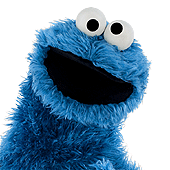Rewatching the interview, it's interesting that almost all of David's changes to the set were the result of what he felt like was getting the street back on track with urban evolution (and even using drawings that kids made to get a better idea of how they see their urban landscape), because he felt like up until his employement, that the street hadn't evolved realistically - the irony is that the 40 Years book said that this is exactly the reason the street had evolved the way it had in recent years (especially starting around Season 39), because it reflected the shift in inner city neighborhoods had been seeing, and that slick and contemporary convenience stores would be more recognizable to today's kids than little mom-and-pop type stores that Hooper's once was (and now is again).
I must admit though, now that I think about it, the street almost has a claustrophobic feel to it, what with moving Oscar closer to the middle of the street and exposing Big Bird's nest (though I do love the tree his nest is in), trying to bring more of the street itself into a small, central location, rather than spreading it out a bit the way it used to be. I'm not saying I dislike these changes, but I guess I do miss the old familiarity of Oscar's can being on the opposite side of the stoop, and the construction doors around Big Bird's nest. But again, the tree makes me think of how vacant lots sometimes have a large tree growing in them that inner city kids enjoy - remember that "Save the Tree" episode of HEY ARNOLD!?
 Welcome to the Muppet Central Forum!
Welcome to the Muppet Central Forum!
.jpg) Christmas Music
Christmas Music
 Macy's Thanksgiving Parade
Macy's Thanksgiving Parade
 Sesame Street debuts on Netflix
Sesame Street debuts on Netflix
 Back to the Rock Season 2
Back to the Rock Season 2
 Sam and Friends Book
Sam and Friends Book
 Jim Henson Idea Man
Jim Henson Idea Man
 Bear arrives on Disney+
Bear arrives on Disney+

